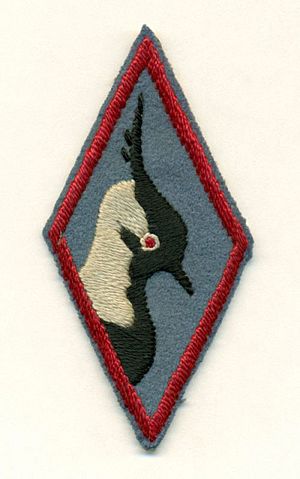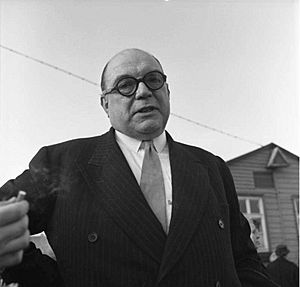Political Warfare Executive facts for kids
During World War II, the Political Warfare Executive (PWE) was a secret British group. Its main job was to create and spread different kinds of messages, called propaganda. This propaganda aimed to lower the enemy's spirits and keep up the confidence of countries fighting against or occupied by Nazi Germany.
Contents
What Was the PWE and When Was It Formed?
The Political Warfare Executive was set up in August 1941. It reported to the Foreign Office, which handles Britain's relationships with other countries. Most of its staff came from a group called SO1. This group used to be the propaganda part of the Special Operations Executive, another secret wartime organization.
Who Ran the PWE?
A special committee managed the PWE. Key members included Anthony Eden, who was the Foreign Secretary, and Brendan Bracken, the Minister of Information. Hugh Dalton, the Minister of Economic Warfare, was also part of it at first. Later, Roundell Palmer took his place. Robert Bruce Lockhart was the chairman and later the Director General.
Where Did the PWE Work From?
The PWE had its main base at Woburn Abbey. It also had offices in London at the BBC's Bush House. Because the PWE was a secret department, it used a different name when dealing with people outside the organization. This cover name was the Political Intelligence Department.
What Happened to the PWE After the War?
After the war ended, the PWE was given a new task. They had to help re-educate German prisoners of war. They sorted these prisoners into three groups:
- Black: These were considered strong Nazis and dangerous.
- White: These were anti-Nazis.
- Grey: These were regular soldiers who weren't strongly political.
What Did the PWE Do?
The PWE carried out many secret activities. They spread messages in various ways to lower enemy morale. They also tried to encourage enemy soldiers to give up.
How Did the PWE Spread Its Messages?
The PWE used several methods to get its messages out:
- Radio Broadcasts: They created secret radio stations like Gustav Siegfried Eins and Soldatensender Calais. These stations broadcast messages to Germany and occupied countries.
- Leaflets and Documents: They dropped leaflets from planes. They also printed secret newspapers and documents in countries occupied by the enemy.
- Rumor Campaigns: They started rumors to cause confusion and distrust among the enemy.
- Forgeries: They created fake documents to trick the enemy.
- Loudspeaker Operations: Sometimes, they used loudspeakers to broadcast messages directly to enemy lines.
How Did the PWE Get Information?
To make their messages believable, the PWE needed good information. They gathered intelligence from many sources. This included questioning prisoners of war and reading newspapers from occupied countries. They also analyzed photos from bombing raids. This information helped them broadcast details about destroyed streets or even individual houses. Sometimes, they even created fake "live" reports from German media.
Were There Any Controversial PWE Activities?
Some of the PWE's actions were quite unusual and even controversial. For example, they sometimes pretended to be dead German soldiers. They would then send food parcels to the soldiers' families. These parcels included messages that encouraged peace.
Sefton Delmer, who ran a British secret radio station, once joked about this. He said that while the families' hopes of seeing their loved ones were false, the ham in the parcels was real!
See also



